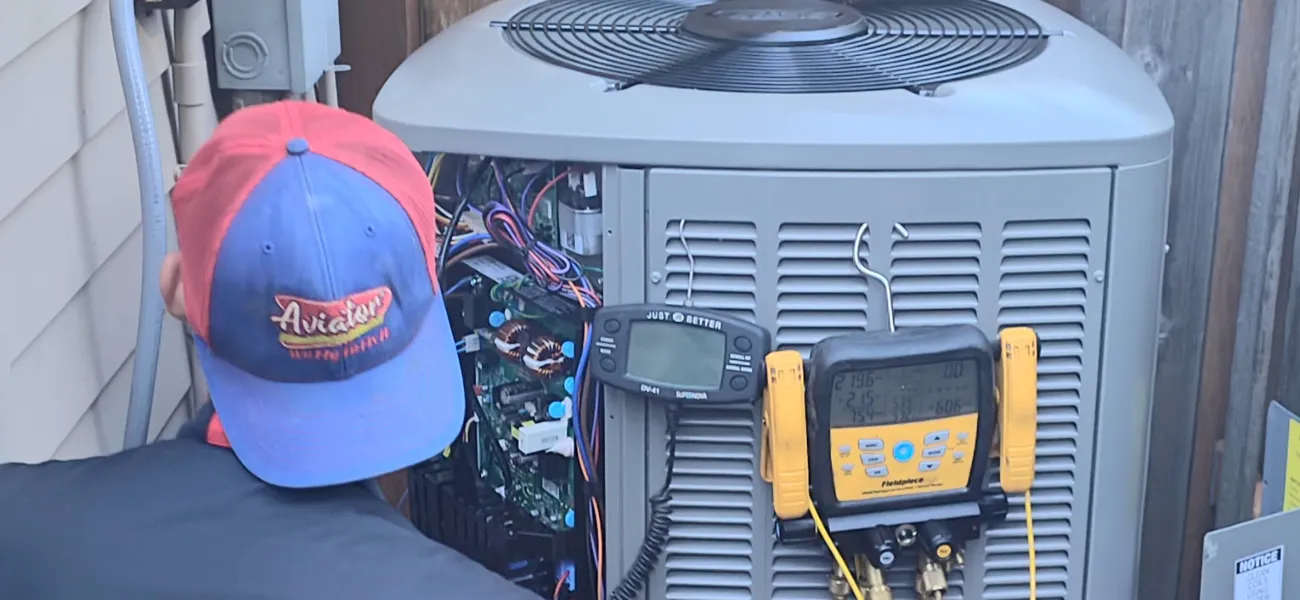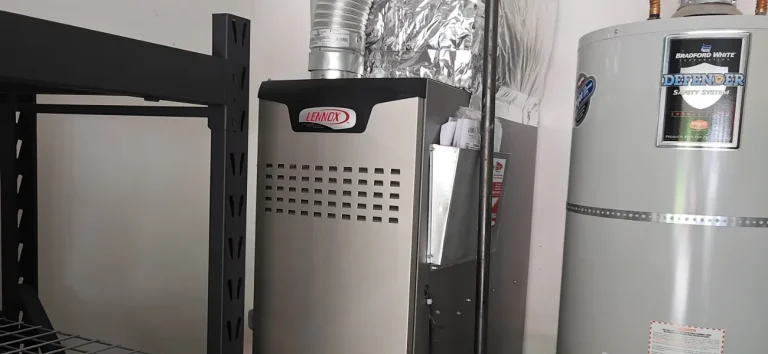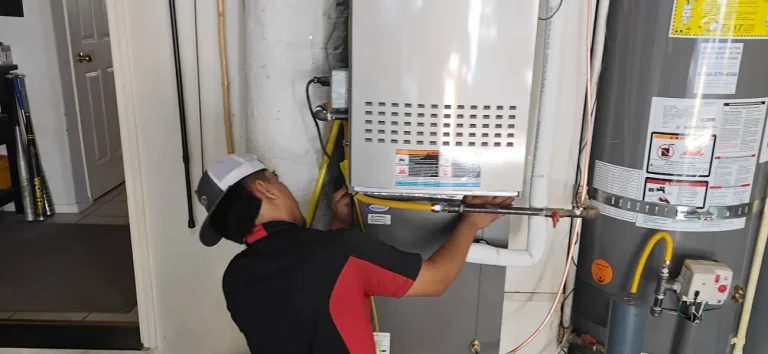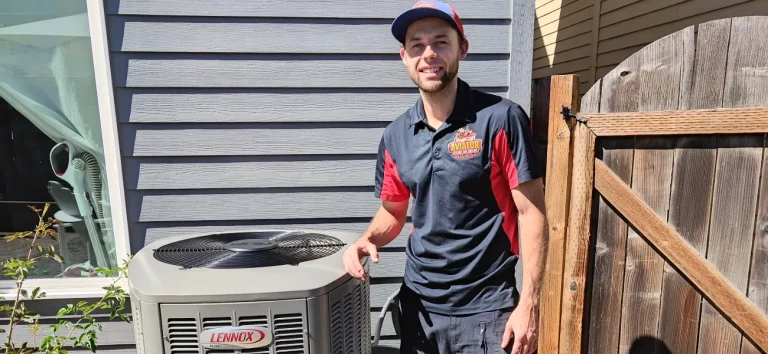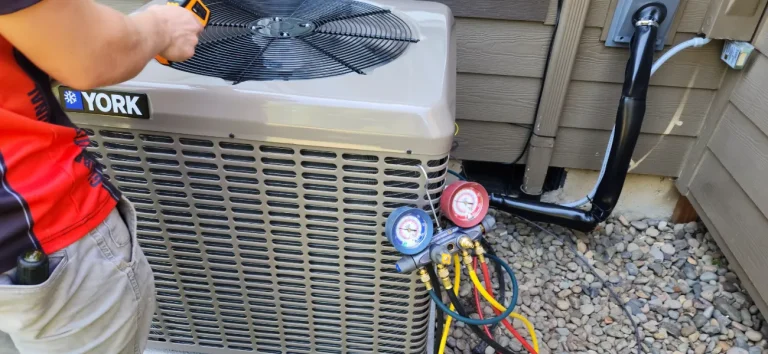Understanding HVAC Energy Ratings: SEER, HSPF, AFUE Explained
If you’re a homeowner in Oregon considering an upgrade to your HVAC system, understanding energy efficiency ratings is key to making the best choice for your home. Ratings like SEER (Seasonal Energy Efficiency Ratio), HSPF (Heating Seasonal Performance Factor), and AFUE (Annual Fuel Utilization Efficiency) provide valuable insights into the performance and energy savings potential of your heating and cooling systems.
These ratings not only impact your energy costs but also play a significant role in maintaining year-round comfort in Oregon’s unique climate. In this guide, we’ll break down what each rating means, why it matters, and how it can help you choose the right HVAC system for your needs while optimizing energy efficiency and system performance.
What Is SEER and Why Is It Important?
SEER (Seasonal Energy Efficiency Ratio)
SEER stands for Seasonal Energy Efficiency Ratio and is used to measure the efficiency of air conditioning units and heat pumps in cooling mode. It’s calculated by dividing the cooling output of a system during a typical cooling season by the amount of electrical energy it consumes in the same period. The higher the SEER rating, the more energy-efficient the unit.
For example, a unit with a SEER rating of 16 is more efficient than one with a SEER rating of 13 because it uses less electricity to achieve the same amount of cooling.
Why SEER Ratings Matter for Homeowners In Oregon
In Oregon, where summers are typically mild but can include occasional heat waves, having an energy-efficient air conditioning system is essential for managing cooling costs. Choosing a system with a higher SEER (Seasonal Energy Efficiency Ratio) rating helps reduce energy consumption during warmer months, making your home more cost-effective to cool. Systems with a SEER rating of 16 or higher are considered highly efficient and can provide significant long-term savings on your energy bills while keeping your home comfortable.
The U.S. Department of Energy has established a minimum SEER requirement of 14 for northern regions, including Oregon. However, upgrading to a system with a higher SEER rating not only reduces energy usage but also decreases your carbon footprint, making your home more environmentally friendly. For Oregon homeowners, investing in a high-SEER air conditioning system ensures both energy savings and reliable cooling performance during the summer months.
What Is HSPF and How Does It Apply to Heat Pumps?
HSPF (Heating Seasonal Performance Factor)
HSPF stands for Heating Seasonal Performance Factor and is used to measure the efficiency of heat pumps in heating mode. Similar to SEER, HSPF is calculated by dividing the total heat output by the total energy consumed over a heating season. The higher the HSPF rating, the more efficiently the heat pump operates during colder months.
An HSPF rating of 8 or above is considered good, with top-rated systems reaching an HSPF of 10 or higher.
Why HSPF Ratings Matter for Heat Pumps in Oregon
In Oregon’s climate, where winters are typically mild with occasional cold spells, heat pumps are an energy-efficient and versatile heating option for many homeowners. The HSPF (Heating Seasonal Performance Factor) rating measures the efficiency of a heat pump during the heating season. A higher HSPF rating indicates better performance, which means the system uses less electricity to keep your home warm.
For Oregon’s winter months, choosing a heat pump with a HSPF rating of 8.5 or higher can provide significant energy savings and ensure reliable comfort. Even small increases in efficiency can make a noticeable difference in reducing heating costs, especially in regions like Oregon where energy efficiency is a priority. If you’re considering an upgrade, selecting a heat pump with a high HSPF rating ensures both lower utility bills and a comfortable home throughout the heating season.
What Is AFUE and How Does It Relate to Furnaces?
AFUE (Annual Fuel Utilization Efficiency)
AFUE stands for Annual Fuel Utilization Efficiency and is the primary efficiency rating for furnaces, boilers, and other combustion-based heating systems. AFUE measures how efficiently a furnace or boiler converts fuel (such as natural gas or oil) into heat over the course of a year. It’s expressed as a percentage—an AFUE rating of 90% means that 90% of the fuel consumed by the furnace is converted into heat, while the remaining 10% is lost through the exhaust.
Why AFUE Ratings Are Crucial for Home Heating In Oregon
In Oregon, where natural gas furnaces are a popular choice for home heating, AFUE (Annual Fuel Utilization Efficiency) is a key efficiency rating to consider. Older furnaces, with AFUE ratings between 65% and 75%, waste a significant portion of the fuel they use, resulting in higher heating costs. Modern high-efficiency furnaces, on the other hand, boast AFUE ratings of 90% to 98%, ensuring that nearly all the fuel is converted into heat for your home.
For Oregon homeowners, investing in a furnace with a high AFUE rating not only improves energy efficiency but also reduces heating bills during the wet, chilly winters. Additionally, high-efficiency furnaces lower your environmental impact by reducing wasted fuel and greenhouse gas emissions. Whether you’re upgrading an old system or installing a new one, choosing a furnace with a high AFUE rating ensures reliable, cost-effective heating for your Oregon home.
How Do These Ratings Affect Your Energy Bills?
When choosing an HVAC system, the higher the SEER, HSPF, or AFUE rating, the more efficient the system will be, resulting in lower monthly energy bills. While high-efficiency systems may have a higher upfront cost, the savings over time on energy consumption can more than justify the investment. Here’s a quick breakdown of how these ratings translate into energy savings:
-
- Higher SEER Ratings: Help reduce electricity costs during summer cooling.
- Higher HSPF Ratings: Improve heating efficiency, lowering electricity bills in winter.
- Higher AFUE Ratings: Reduce fuel costs by converting more of your natural gas or oil into usable heat.
Choosing the Right System for Your Oregon Home
When choosing a new HVAC system for your home, it’s important to consider both the efficiency ratings and your specific climate needs. Homes in Hillsboro experience both hot summers and cold winters, so finding a system that offers both high SEER and HSPF ratings for heat pumps—or a high AFUE rating for furnaces—is essential for maximizing energy efficiency year-round.
At Aviator Heating & Cooling, we specialize in installing and servicing energy-efficient HVAC systems with high SEER, HSPF, and AFUE ratings. Our team can help you choose the right system for your home based on your comfort needs, energy efficiency goals, and budget.
If you’re ready to upgrade your HVAC system to a more energy-efficient option, contact Aviator Heating & Cooling today. We proudly serve homeowners in Hillsboro, Portland, Beaverton, Tigard, and the surrounding areas. Let us help you reduce your energy bills and keep your home comfortable with a high-efficiency HVAC system tailored to your needs!
If you'd like to schedule an estimate to upgrade your HVAC system please give us a call (503) 770-4822 or fill out our online estimate request form and we'll get right back to you.

